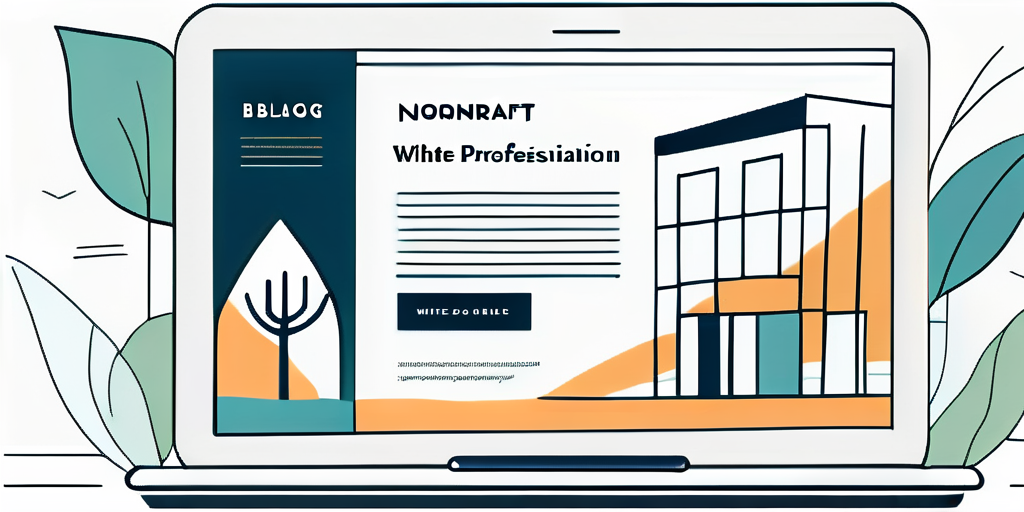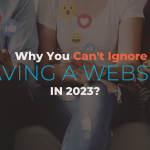Nonprofit organizations play a crucial role in our society, addressing various issues and making a positive impact on the lives of many. In today’s digital age, having a well-designed and effective website is essential for nonprofits to reach their target audience, engage supporters, and achieve their goals.
Understanding the Importance of Web Design for Nonprofits
A nonprofit’s website is more than just an online presence. It serves as a powerful tool that can significantly contribute to the organization’s success. A well-designed website can enhance credibility, increase donations and volunteer participation, and facilitate effective communication with stakeholders.

But what exactly makes a nonprofit’s website so important? Let’s dive deeper into the role of web design in nonprofit success.
The Role of a Website in Nonprofit Success
A nonprofit’s website acts as a central hub for sharing information about the organization’s mission, programs, and achievements. It enables nonprofits to showcase their impact, attract potential donors, and foster relationships with supporters.
Imagine a potential donor stumbling upon a nonprofit’s website for the first time. A well-designed website can instantly captivate their attention, conveying the organization’s purpose and inspiring them to get involved. By providing a visually appealing and user-friendly experience, the website becomes a persuasive tool, encouraging visitors to take action.
Moreover, a website can streamline various processes, such as online donations, event registrations, and volunteer management, making it easier for individuals to contribute and get involved. With a few clicks, supporters can make a donation, sign up for a fundraising event, or express their interest in volunteering. This convenience not only increases participation but also saves valuable time and resources for the nonprofit.
Key Elements of Effective Nonprofit Web Design
When developing a website for a nonprofit organization, several key elements should be considered to ensure its effectiveness.
Firstly, the website should have a visually appealing design that aligns with the organization’s branding and values. Colors, typography, and imagery should be carefully chosen to create a cohesive and impactful visual identity. A well-designed logo and consistent use of branding elements throughout the website can enhance recognition and build trust among visitors.
A clear and intuitive navigation structure is also crucial to ensure visitors can easily find the information they need. By organizing content into logical categories and providing a search function, users can quickly locate the desired information without feeling overwhelmed. This seamless navigation experience enhances user satisfaction and encourages them to explore further.
Additionally, the website should be responsive and accessible, allowing users to access content across various devices and accommodating individuals with disabilities. With the increasing use of smartphones and tablets, it is essential for a nonprofit’s website to adapt to different screen sizes and resolutions. Accessibility features, such as alt text for images and proper heading structure, ensure that individuals with visual impairments can access and understand the content.
Furthermore, integrating social media platforms and incorporating storytelling elements can enhance engagement and foster a sense of community. By sharing success stories, testimonials, and impact metrics, nonprofits can effectively communicate their mission and inspire others to join their cause.
In conclusion, web design plays a crucial role in the success of nonprofit organizations. A well-designed website not only enhances credibility but also increases donations, volunteer participation, and effective communication with stakeholders. By considering key elements such as visual appeal, intuitive navigation, responsiveness, and accessibility, nonprofits can create a compelling online presence that drives their mission forward.
Setting Your Nonprofit Web Design Goals
Before embarking on the web design process, it is vital for nonprofits to establish clear and measurable goals. Identifying the target audience is the first step, as understanding their needs and preferences will shape the website’s design and content. Next, nonprofits should define their desired outcomes, whether it be increasing donations, recruiting volunteers, or raising awareness. Setting specific goals will help guide the design process and measure the success of the website.

When it comes to setting goals for your nonprofit’s web design, it’s important to consider the unique characteristics of your organization and the community you serve. Each nonprofit has its own mission, values, and objectives, and these should be reflected in the website’s design. By aligning the website’s goals with the overall mission of the organization, you can create a cohesive and impactful online presence.
Identifying Your Target Audience
Nonprofits exist to serve specific communities or address particular causes. Identifying the target audience is critical in order to tailor the website’s messaging and design to resonate with them. Conducting research and gathering insights about the audience’s demographics, interests, and motivations will enable nonprofits to create a website that effectively engages and connects with their intended audience.
Understanding your target audience goes beyond just knowing their demographics. It’s important to delve deeper and gain a comprehensive understanding of their needs, challenges, and aspirations. By conducting surveys, interviews, and focus groups, you can gather valuable insights that will inform the design and content of your website. This audience-centric approach will ensure that your website speaks directly to the people you aim to serve, fostering a sense of connection and trust.
Defining Your Desired Outcomes
Clearly defining the desired outcomes of a nonprofit’s web design efforts is essential for measuring success and maximizing impact. For some organizations, the main goal may be to increase online donations. In contrast, others may prioritize volunteer recruitment or sharing educational resources. By setting specific and measurable objectives, nonprofits can focus their web design efforts on aligning with these goals.
When defining your desired outcomes, it’s important to consider both short-term and long-term goals. Short-term goals may include increasing website traffic, improving user engagement, or enhancing the overall user experience. Long-term goals, on the other hand, may involve building a strong online community, establishing brand recognition, or becoming a trusted resource in your field. By setting a combination of short-term and long-term goals, you can create a roadmap for success that encompasses both immediate impact and sustainable growth.
Additionally, it’s crucial to regularly evaluate and reassess your goals as your nonprofit evolves and adapts to changing circumstances. By regularly reviewing your goals, you can ensure that your website remains aligned with your organization’s mission and continues to effectively serve your target audience.
Essential Features of Nonprofit Websites
Nonprofit websites should include essential features and functionalities that encompass the organization’s needs and facilitate engagement with visitors. These features enable nonprofits to collect donations, manage events and volunteers, and effectively communicate their mission and impact.
Donation Tools and Features
One of the primary objectives of many nonprofit organizations is to attract donations to support their work. Therefore, it is crucial for nonprofit websites to incorporate user-friendly donation tools and features. These may include prominent “Donate” buttons, secure payment gateways, recurring donation options, and the ability to track and acknowledge contributions.
Event and Volunteer Management Features
Many nonprofits rely on events and volunteers to carry out their work. Nonprofit websites should include features that allow organizations to promote and manage events, such as online event registration, ticket sales, and event calendars. Additionally, volunteer management features, such as volunteer sign-ups, shift scheduling, and communication tools, can streamline the process of recruiting and organizing volunteers.
Choosing the Right Web Design Agency for Your Nonprofit
Selecting the right web design agency is crucial for nonprofits to develop a website that effectively represents their mission and achieves their goals. When searching for a web design agency, several factors should be considered to ensure a successful partnership.
What to Look for in a Web Design Agency
The web design agency should have experience working with nonprofit organizations and understand their unique needs and challenges. Thoroughly reviewing the agency’s portfolio and client testimonials can provide insights into their expertise and ability to deliver results. Additionally, considering the agency’s approach to user experience, accessibility, and responsive design is essential to ensure the website will meet the needs of diverse users.
Questions to Ask Potential Web Design Agencies
When evaluating potential web design agencies, nonprofits should ask relevant questions to assess their compatibility and capabilities. These questions may include inquiring about the agency’s design process, project timelines, pricing structure, and ongoing support services. By asking these questions, nonprofits can gain a comprehensive understanding of how the agency operates and determine if they are the right fit for their web design needs.
Implementing Best Practices in Nonprofit Web Design
Nonprofits should strive to implement best practices in web design to ensure their websites are user-friendly, accessible, and optimized for success.

Accessibility and User Experience
Creating an inclusive website that is accessible to all users, regardless of disabilities, is essential for nonprofits. Incorporating accessibility features such as alt text for images, proper heading structure, and easy-to-read content will ensure that individuals with disabilities can navigate and engage with the website. Additionally, prioritizing user experience by designing intuitive navigation, clear calls-to-action, and engaging content will enhance visitor satisfaction and encourage further engagement.
SEO and Content Strategy for Nonprofits
Search engine optimization (SEO) plays a crucial role in improving a nonprofit’s online visibility and attracting relevant traffic to their website. Nonprofits should develop a content strategy that incorporates relevant keywords, engaging storytelling, and regular updates to ensure their website ranks well in search engine results. This allows nonprofits to reach a wider audience and increase their chances of achieving their desired outcomes.
In conclusion, web design plays a critical role in the success of nonprofit organizations. By understanding the importance of web design, setting clear goals, incorporating essential features, choosing the right web design agency, and implementing best practices, nonprofits can create engaging and effective websites that contribute to their mission and impact. Investing in a well-designed website is an investment in the future success and sustainability of nonprofit organizations.




